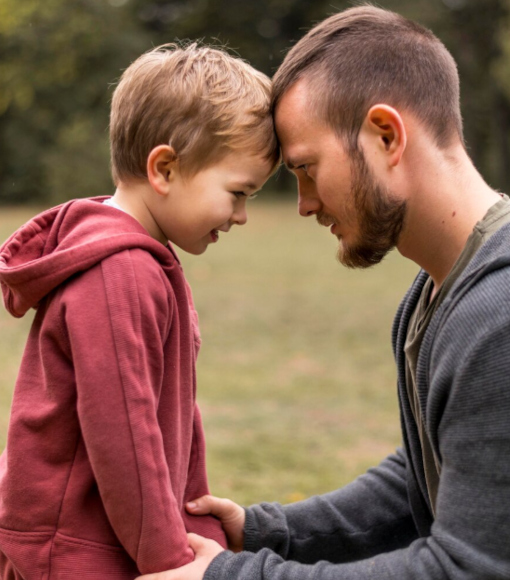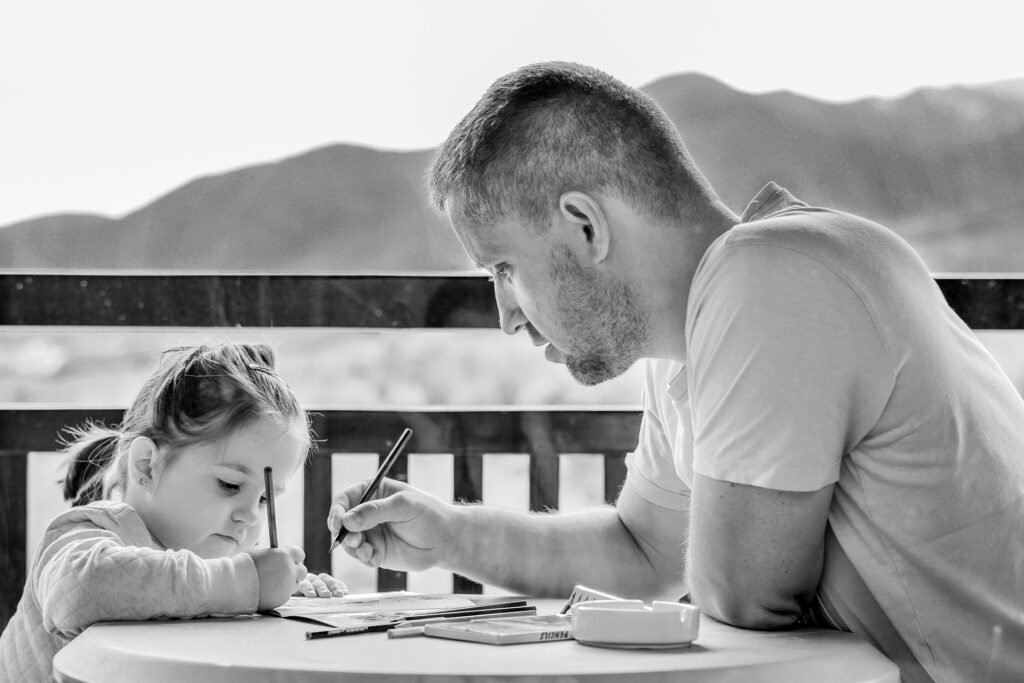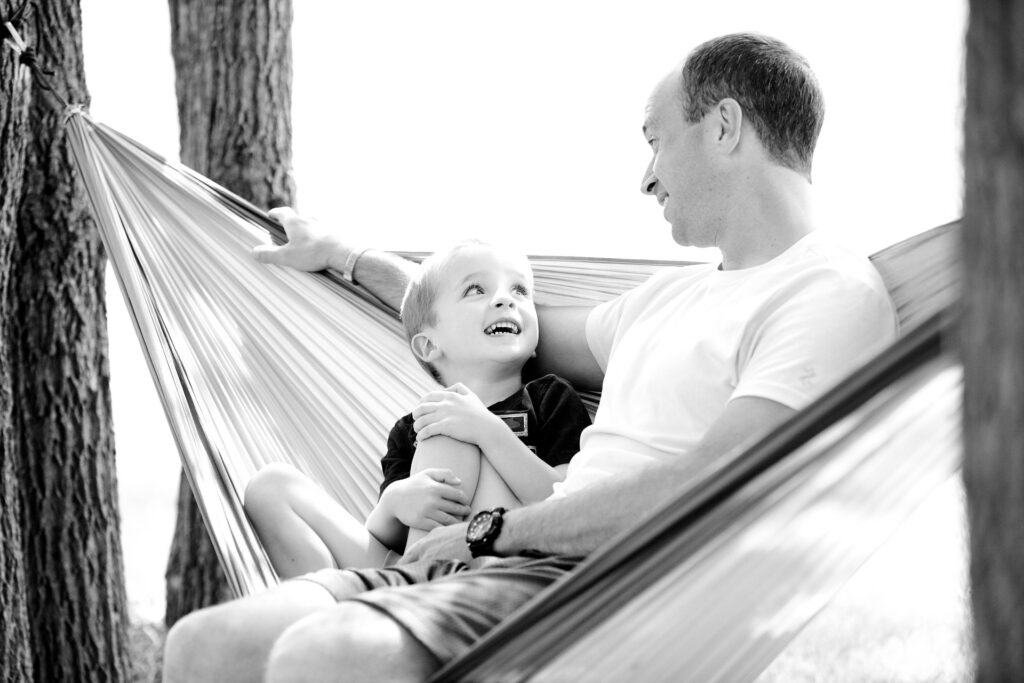- Home
- Help & Kknowledge
Resources for you
Help & Knowledge
Resources for you
As soon as you join Autism Dad United Global, you’ll have access to all member pages including Dad’s Academy, Real Dads Journey, Dad to Dad Helpline, and Dads’ United Forum. Register for free and access all member sections through the link “Member Area”.
Dad’s Academy is your personal educational platform offering courses and tools specially designed for fathers of children with ASD. Here you’ll find everything from foundational knowledge about autism and ASD to practical strategies for everyday life. Through comprehensive online courses, live webinars with experts and experienced fathers, as well as downloadable resources, you’ll gain valuable insights that support your journey. Whether you want to learn about communication, conflict management, or how to take care of your own wellbeing – Dad’s Academy is here for you.
Dads’ Real Stories features inspiring stories, helpful videos, and real experiences from fathers like you. Here you’ll meet other fathers’ personal journeys and learn about their breakthroughs, challenges, and lessons learned.
Dad to Dad Helpline is our support line where you can talk with experienced fathers who understand what you’re going through. All calls are free and confidential. We’re here in the evenings when you need someone to talk to.
Our Dads’ United Forum (launching February 2026) connects you directly with other fathers who truly understand your daily challenges and triumphs.


Finding Strength Through Shared Experience
Whether you’re experiencing loneliness, anxiety, stress, or other everyday challenges – remember that you are not alone in this. Many others have walked the same path and felt similar emotions.
We believe that shared knowledge and community create strength – and that there is always hope and the possibility for change, even in the most difficult times. Take the time to explore what feels right for you.
What are you feeling right now?
Worry and anxiety can creep up slowly or hit us all at once. Sometimes we know exactly what triggers the feeling, and sometimes we don’t—and both are completely normal experiences. Not being able to name the cause doesn’t make the feeling any less real.
Notice where in your body the worry shows up. It might feel like tightness in your chest, pressure in your stomach, or restlessness in your arms and legs. By pausing and listening to these signals, we can sometimes create just a little more space to breathe and let go.
Quick exercise for worry/anxiety – “The 4-7-8 Breath”
Sit comfortably and close your eyes if it feels right.
Inhale gently through your nose for 4 seconds.
Hold your breath for 7 seconds.
Exhale slowly through your mouth for 8 seconds, as if blowing through a straw.
Repeat 3–4 times. Notice if your body feels a bit more relaxed afterwards.
Feeling sad and low is a natural part of life. Everyone experiences moments when sorrow or heaviness takes up space. It’s part of being human—facing challenges and the emotions that come with them.
Allow yourself to grieve, cry, or simply sit quietly with what feels heavy. Feelings are not dangerous—they are signals that can help you understand what matters most to you. Sometimes we know exactly why we feel sad, and other times we don’t. Either way, the feeling is there for a reason. Often it fades with time, but sometimes it stays a little longer.
Quick exercise for low mood – “3 Minutes to Ground Yourself”
Sit comfortably and close your eyes.
Place one hand on your stomach and take three slow, deep breaths. Feel the movement as your stomach rises and falls.
Silently name three things you are feeling right now (for example: “sad,” “tired,” “worried”).
Then notice one small thing—no matter how simple—that gives you a sense of comfort or relief (for example: a blanket, the sound of rain, or a friend’s voice).
Stay with that moment for one minute before continuing with your day.
Feeling worn out and without strength can be like standing still in a landscape without color. Perhaps you’ve gone through a major change, lost something or someone deeply important, or watched a life goal slip away. It might be a relationship that ended, or a joy that once felt close but now seems far out of reach. Sometimes hopelessness is part of depression or the result of prolonged stress that wears on both body and mind.
When the feeling is present, it can feel heavy and unshakable. It may be hard to see where it comes from or what it is trying to tell you. For some, it feels like emptiness—as if nothing matters anymore. Even though it is painful, hopelessness is also a signal—an invitation to slow down and listen inward.
Quick exercise for hopelessness – “One Step Forward”
Take a deep, slow breath and feel the air filling your lungs. Exhale gently.
Write down three small things you can do today—even if they feel insignificant.
Choose one of them, the smallest and simplest. Do it right now, without overthinking.
When you’re finished, notice how your body feels and give yourself credit for taking a step forward.
Embarrassed and ashamed – these feelings can be felt throughout the body, like a racing heartbeat, blushing, cold sweats, anxiety, or a knot in the stomach. They often appear when we feel different, weak, strange, or when we think we’ve failed. Common ways of coping with shame are turning anger toward ourselves or others, withdrawing, or trying to numb the feeling.
Shame is uncomfortable, but it has a purpose. It reminds us of our need for belonging and can help us become more understanding toward others – like a kind of social and empathic compass. But sometimes shame strikes without any reasonable cause, becoming more of a burden than a guide.
Short exercise for shame – “Shift perspective”
Pause and take three slow breaths.
Imagine a close friend feeling exactly what you’re feeling right now.
Write down three things you would say to that friend to show understanding and care.
Then read those words out loud – to yourself.
Notice if your tone toward yourself softens, and if the feeling of shame shifts, even just a little.
Stress can show up both in the body and mind: racing thoughts, tense muscles, headaches, trouble sleeping, or a constant sense of being on edge. It often comes when the demands around us feel greater than the energy or resources we have.
Stress isn’t always negative – in small doses, it can help us stay focused and motivated. But when it becomes constant, it drains us and makes recovery difficult.
Short exercise for stress – “Pause & Reset”
Stop for a moment and take three deep, slow breaths.
Place one hand on your chest and one on your stomach, notice the rise and fall with each breath.
Choose one small thing you can let go of or postpone today.
Tell yourself: “It’s enough to do one step at a time.”
Loneliness can be felt even when surrounded by others. It might feel like a hollow emptiness, a sense of being unseen, or not truly connected. Sometimes it shows up as physical heaviness, low energy, or a quiet sadness that lingers.
Feeling lonely doesn’t mean something is “wrong” with you. It’s a human signal, reminding us of our deep need for connection and belonging.
Short exercise for loneliness – “Reach Out Gently”
Pause and notice: what does loneliness feel like in your body right now?
Think of one safe person you could share a small thought or moment with today – even a text counts.
If no one feels available, connect with yourself: write down three things you appreciate about who you are.
Remind yourself: “My need for connection is human. I deserve care and belonging.”
Anger often shows up as a tight chest, clenched jaw, restless energy, or heat in the body. Irritation can come from unmet needs, feeling unheard, or being pushed beyond our limits.
Anger is not “bad” – it’s a signal that something matters to you, that a boundary has been crossed, or that you long for change. But if it stays inside or bursts out uncontrolled, it can create distance instead of connection.
Short exercise for anger – “Pause & Redirect”
Notice where the irritation or anger sits in your body.
Take three steady breaths, focusing on exhaling slowly.
Ask yourself: “What is my anger trying to protect or tell me?”
Write down one constructive action you can take that respects both your feelings and others around you.
Sometimes it’s hard to know exactly what you’re feeling. In those moments, it can be easier to describe what’s happening in your body – maybe stomach pain, a restless feeling under your skin, constant fatigue, or a lump in your throat that makes you want to cry.
There are many reasons why identifying emotions can be difficult. Stress, grief, depression, neurodivergence, or even certain medications can affect how clearly feelings show up. Sometimes several emotions happen at the same time, creating an inner tangle that’s hard to sort out. That doesn’t mean the feelings aren’t there – only that they’re not easy to capture in words right now.
Short exercise when you don’t know what you feel – “Body to Emotion”
Sit down in a calm space and close your eyes if it feels comfortable.
Slowly scan your body from head to toe, noticing where you sense something – tension, warmth, cold, heaviness, or lightness.
For each spot, ask yourself: “If this sensation had a color or a shape, what would it look like?”
When you’re done, look at the whole picture: Which colors and shapes dominate? What might they say about your current state?
Write down your observations – sometimes the body can lead the way to finding the words.

Every dad deserves support. Join Autism Dad United Global a community for fathers raising children with ASD, Autism, or ADHD. Get practical tips from experienced dads, expert advice, tools, & the support of a caring community.
We also warmly welcome stepparents, bonus dads, and grandparents
The fathers of children and youth with Autism, ADHD, or related ASD diagnoses are at the heart of our mission.
Read our latest blogs
News & Articles
Being a Father to a Child with Autism
Being an Autistic Dad: Strengths and Challenges
Why your child with ASD needs you as a father — more than you realize

Subscribe to our newsletter
Stay updated on the latest in mental health. You are needed.
Lorem ipsum dolor sit amet, consectetur adipiscing elit. Ut elit tellus, luctus nec ullamcorper mattis, pulvinar dapibus leo.



